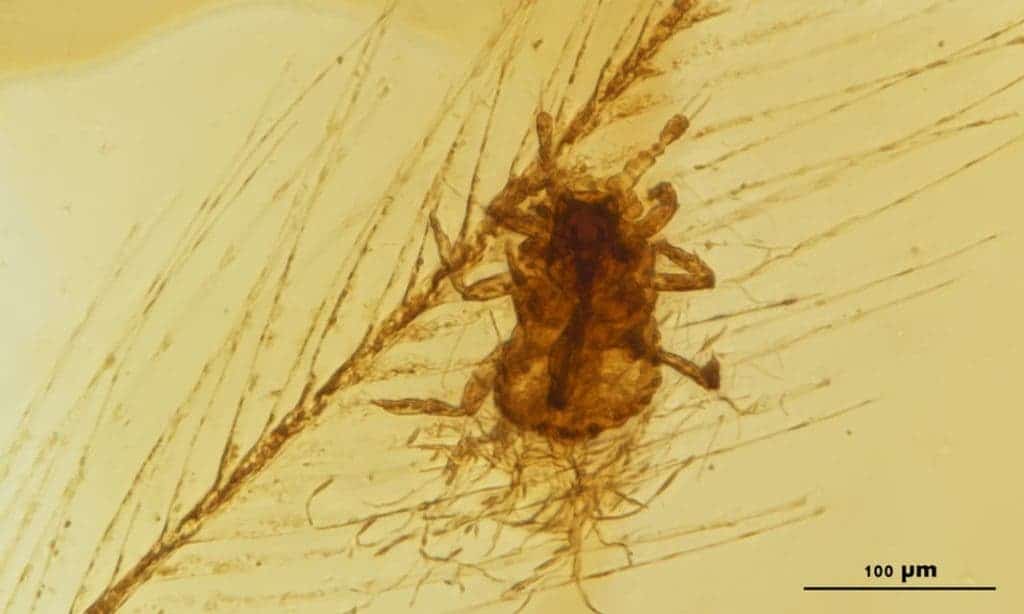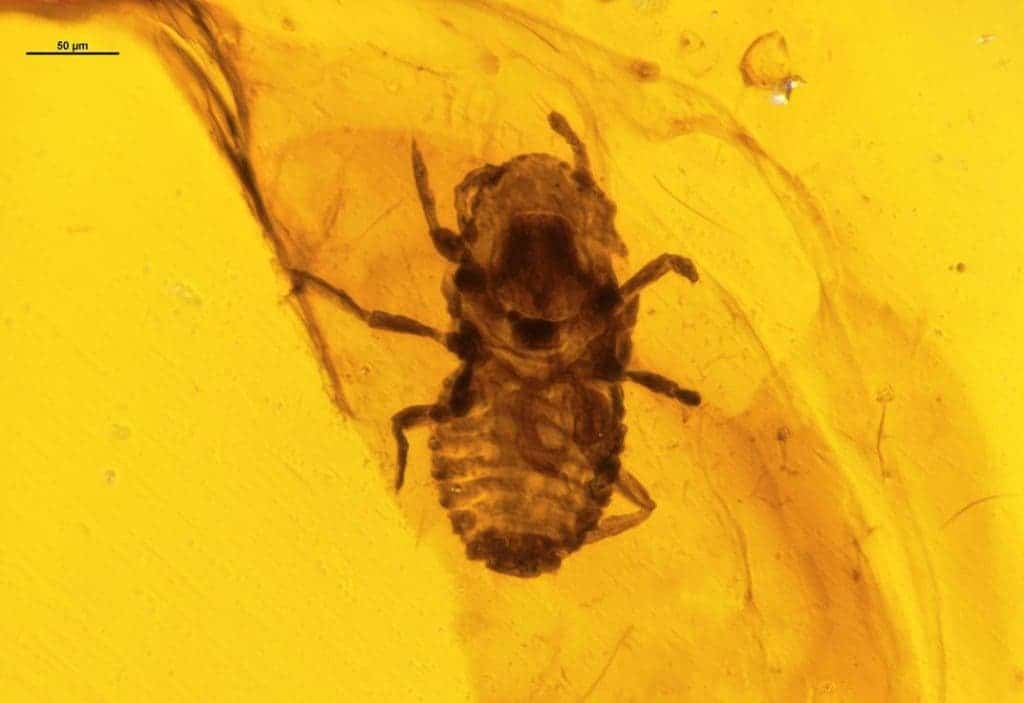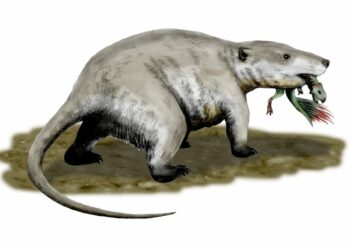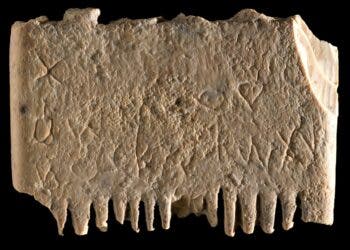Modern birds are often plagued by feather-chewing lice and, according to a new study of two amber fossils, their dinosaur ancestors weren’t spared, either.

Paleontologists from the Capital Normal University in Beijing recently described a louse-like insect, which they’ve named Mesophthirus engeli, based on individuals trapped in two pieces of Burmese amber.
The insect lived around 100 million years ago during the mid-Cretaceous. The same amber fossil also contained damaged feathers, which by the looks of them, seem to have been chewed by the ancient lice. This makes it the oldest evidence yet of insects feeding on feathers.

Previously, researchers showed that dinosaurs had all sorts of parasites pestering them, from fleas to ticks. Adding lice to the list isn’t that much of a surprise. What was surprising, though, was their relatively small size. The researchers believe that adults measure about 0.5mm in length, which is very small compared to other ectoparasites from that era, like fleas.
The previous record-holder for the oldest feather-munching insect belonged to Megamenopon rasnitsyni, a 44-million-year-old ancient bird louse. The new findings extend this parasitic behavior by another 55 million years.
Mesophthirus engeli had many features common in modern lice, including teeth, short, study antennae, and a thick, wingless body. Their feedings patterns also seem similar. When the researchers examined one of the feathers traped in amber under a microscope, they found holes toward its end, but not near the base — this is how modern lice feed on feathers, too.
“This finding demonstrates that feather-feeding behaviours of insects originated at least in the mid-Cretaceous, accompanying the radiation of feathered dinosaurs including early birds,” the authors wrote in Nature Communications.
Modern bids have the ability to molt, which enables them to replace old or damaged feathers. The new study may explain how molting evolved, also suggesting that lice evolved alongside the development of feathers.






